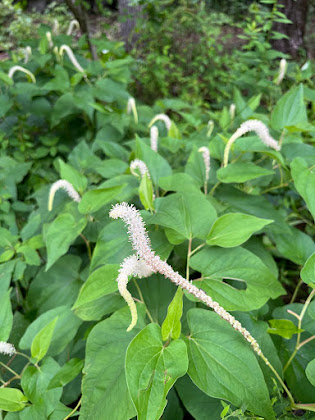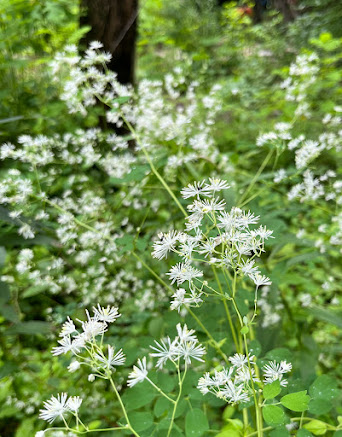There are many reasons to visit Herrontown Woods. Many people walk their dogs there, seek tranquility and relief from a fractious world, or simply want a good hike up to the ridge amongst trees and boulders. Others come to learn the story of the Veblens, as told on the walls of Veblen House. And some are talked into coming by their kids, who want to play and explore in the Botanical ARt GarDEN (Barden for short).
Sometimes we lead nature walks in the woods, as we did on Nov. 2 after the monthly May's Barden Cafe. This fall offered many glorious days for a walk in the woods, and that was one of them we shared together.A week later, as someone who stewards and studies Herrontown Woods, I had a much different agenda as I parked my car at a little known entrance to Herrontown Woods, on Windy Top Court.
That's the entrance closest for doing a quick check of a 3 acre patch of wisteria that we've been steadily fighting back. It probably originated long ago as a lovely little vine in a garden that later was abandoned, allowing the vine to expand on its own into the woods. Decades of unfettered growth turned it into a wisteria monster, tearing down trees and smothering all other growth in the woods.The footing was very difficult, because the clump was in the middle of a large boulderfield hidden by the dense growth. Though the nonnative shrubs can turn pretty colors in the fall, their dense growth has blocked many fine vistas and features that we'd like to restore. Each boulder in Herrontown Woods is a work of nature's art, mottled with varied shapes of lichen and moss, like the mottled skin of whales navigating the oceans.
Here you can see the shrubs literally perched on top of the boulders. I cut and treated the bush honeysuckle, navigated back to the trail, and returned down the trail to the car. The nonnatives are not inherently bad. Their rambunctiousness makes them too much of a good thing. Since the deer don't eat them, our loppers play the role. It was a classic session, mixing the satisfactions of stewardship with little moments of serendipity and discovery along the way.



















































